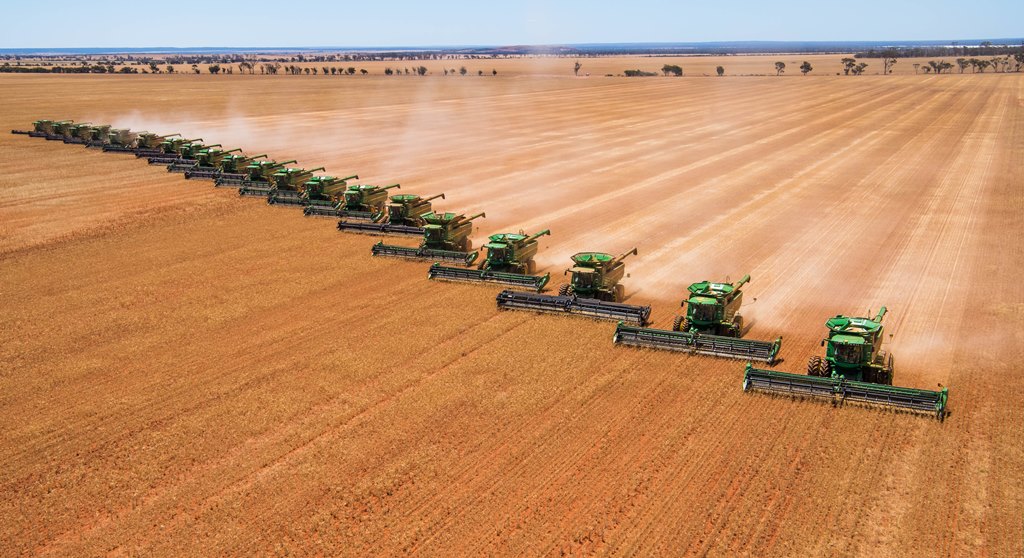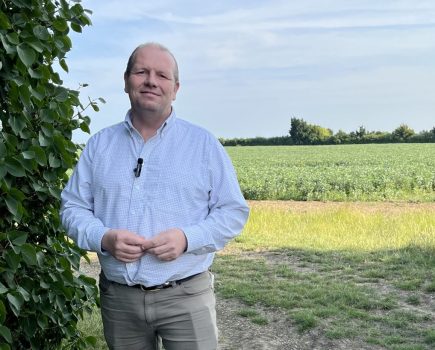Having spent a week touring some of the largest farming businesses in Australia’s wheat belt, one can’t help but note the innovative approach of farmers trying to manage some big issues such as climate change, crop establishment and weed resistance.
Lack of rainfall during the pre-drilling and growing season seems to have become more the norm in Western Australia, where some regions receive only 350mm of rainfall during the crop’s life. Light topsoil over clay is very common in these reclaimed soils, and there’s no doubt a no-till, controlled traffic system has led to a very well structured clay subsoil – it easily crumbles into small aggregates, providing natural fissuring for water and nutrient-scavenging by roots. Some farmers have even excavated clay and mixed it into the topsoil to improve moisture retention.
No-till is also vital to conserve what, if any, seedbed moisture is present. Of the drills seen, most are of a tine nature, and combine base fertiliser, with some also applying a soil/seed fungicide such as flutriafol.
The capital cost of establishing a CTF system is probably one of the main barriers to the adoption of the system, but Australian farmers have bitten the bullet resulting in compatible drilling, spraying and harvesting systems typically of 18m. It has to be said, this scale works well in the typical field size over there – the average is over 100ha, while the largest field I saw was 1173ha.
The biggest farm business I visited was 204,000 ha and had just been bought by the Saudis who are already looking for strategic global supplies of wheat and oilseeds as irrigation on arable crops is being phased out to conserve water. The main aquifer in Saudi Arabia has the potential to provide water for another 125 years, but would run out by 2050 if agriculture continues to use water at its present rate.

The Saudi’s have just purchased over 200,000ha of farming in Western Australia’s wheatbelt, looking to secure wheat supplies as irrigation is being phased out for domestic production. Photo: Alice Mabin.
A significant proportion of the total nitrogen top dressing is applied in the seedbed, and the option of top dressing is very much governed by crop growth and the likelihood of rain. Yields are around 4t/ha, so judicious use of inputs is required to maximise gross margin. Oilseed rape in the rotation varies from alternate years to one in four, and it’s clear there’s an impact of a tight rotation on yield.
Fungicide use is very much on a “as and when necessary” approach, rather than a routine T0, T1, T2 system – the decision on whether to spray is governed by crop yield potential.
When it comes to herbicide resistance issues, the Australians have their fair share, primarily with ryegrass. The first ryegrass resistance to glyphosate was discovered in Australia, and now an integrated approach to using residual herbicides with weed-seed disposal methods at harvest is commonplace. Because ryegrass seed is more or less fully retained at harvest, combines are generally fitted with one of three weed-seed systems.
The first is a conveyor that channels chaff and weed seeds from the sieves into a trailer that periodically empties into a heap which is subsequently burnt. The second is a system where the weed seed is channelled from the sieves into the tramline wheelings – regular passing down the tramlines from field operations results in very few plants producing an ear. The third, and most recent system directs seeds from the sieves through a mill to crush them and make them non-viable.
Remote-sensing technologies, that are also being developed here in the UK, have a real opportunity with growers in the Australian wheat belt. For example, the ability to measure the rate of crop growth and development informs decisions on nitrogen quantity and timing. NDVI maps which highlight areas of poor biomass production and crop stress enable much better use of an agronomist’s time, targeting problems that may be rectified in the growing season. The detection of late frost damage on the developing ears of wheat is also of real value to farmers and traders.
With such vast expanses of crop to cover, pre-symptomatic disease detection methods currently being developed in the UK could be a real winner. Such technology would enable farmers to time fungicide inputs closer to the problems as and when infection takes place, rather than prophylactic spraying which undoubtedly adds to selection pressure and the development of fungicide resistance. Australian growers, it seems, face very similar problems to those in the UK – it’s just on a different scale. It may be the other end of the world, but there’s a lot we can learn from each other.
Formerly technical director at Velcourt, Keith Norman is an independent consultant who avidly pursues innovation in agriculture. @KeithNorman_Ag





